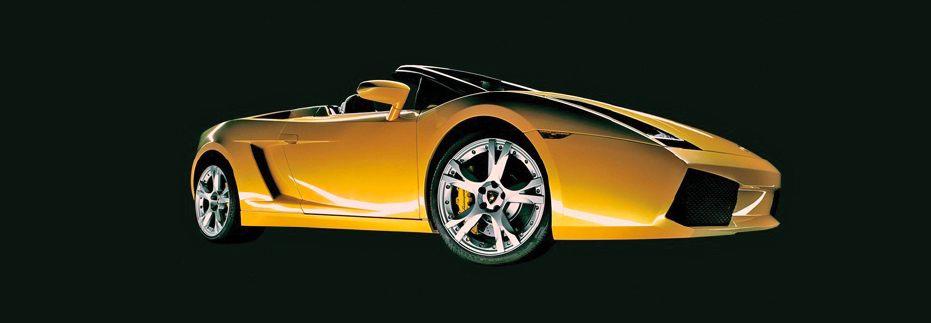As I basked in the sun with my family on a beach near Charleston, SC recently, I caught up on some of my favorite industry reading. Beach vacations are uniquely suited for this type of relaxation. This time, however, I shocked my wife and family when suddenly I began yelling at the magazine and threw it in the sand.
You may wonder what I could have possibly read, on a relaxing vacation, and in my favorite magazine for the collector car industry that would cause such a strong reaction. I reacted because the author of an article about a 2007 Lamborghini Gallardo Spyder made a statement with which I vehemently disagree. In fact, I think it has potential to mislead readers in such a way that it could literally ruin someone’s life, if the wrong person took it to heart when considering the purchase of a pre-owned exotic car.
I’m not going to name the magazine because it’s a highly reliable, respectable publication and I don’t want to cause anyone to think any differently about the publication because of this single, yet misleading, statement. But, allow me to share the exact quote that set me off; the author is speaking specifically about a 2007 Lamborghini Gallardo Spyder that crossed the auction block:
“Because of their initial purchase price and desirability, no Lamborghini is going to go through any period of middle-aged neglect like a Pontiac Trans Am or Chevrolet Corvette. Exotics will always be garaged and babied, with minimal miles on the clock.”
This is not an accurate statement, in my view, and it is stated as fact. It bothered me because not all people who buy exotic cars are high-net-worth individuals. Often, they’re simply passionate car lovers who may spend their life savings or, as in the case of one man, obtained a second home mortgage to purchase their dream car.
Here’s what the article didn’t say: This particular model of Lamborghini was never mechanically reliable and robust, even brand new. They sold for $250,000 initially, but now we see them selling anywhere from $50k to $90k. Anyone, high net-worth or otherwise, deserves to know what they’re actually getting into when they purchase an exotic car.
Many Exotic Cars Go Through Middle-Age Neglect
The truth is that many high-end exotic cars do go through middle-age neglect, and their current value will reflect performance and reliability issues that surface after their debut. Take the Maybachs build on the MB W220 chassis, for example. These cars originally sold from $300k to $400k-plus. Today, a quick online search brings up dozens for sale from $50k to $100k. That amounts to massive depreciation for a car under ten years old. Why such an astounding loss of worth? They’re expensive to work on, parts aren’t readily available, and current owners often choose to cut corners.
Case in point: The interior grab handle for a Maybach costs $1,590. A quick search on EBay has a set of floor mats going for $999. And a call to my local Maybach (Mercedes) parts guy yielded this information: The replacement cost for a glove box assembly on 57s and 62s – certainly not the most robust interior piece – is $4,000 for parts alone.
Finally, let’s take a look at the Maserati Quattro Porte (V chassis). These cars sold for $90k to $100k new. Today, we see them flooding the market, with the early years selling anywhere from $12k to $18k. These cars had catastrophic deficiencies, including bad transmissions, faulty clutches, leaking steering racks and more. So, if you don’t go into such a purchase with eyes wide open, what may seem like an once-in-a-lifetime opportunity to find the car of your dreams at a low price point is in reality, a very costly decision.
Does all of this mean you shouldn’t consider purchasing a pre-owned exotic? No way. But here’s the takeaway: You must know the facts about the model you want. That’s what we do at PAG — provide clients with extensive, personalized automotive advising on a fee-only basis. It’s critical information for the discerning buyer.

